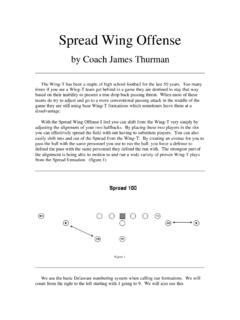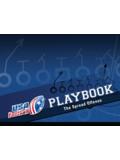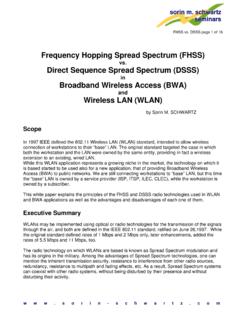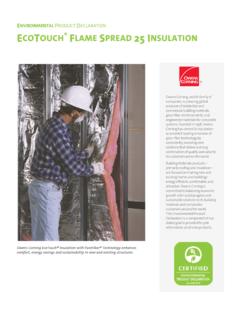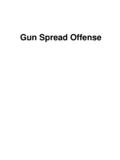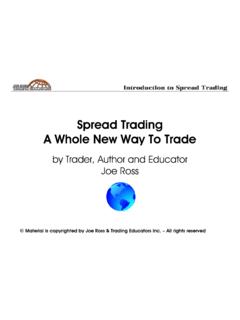Transcription of THE SPREAD OPTION RUN-AND-SHOOT OFFENSE
1 THESPREAD OPTIONRUN-AND- shoot OFFENSEBY TED SEAY2 TABLE OF CONTENTSI ntroductionPage 3 FormationPage 4 Triple OptionPage 5 Fullback TrapPage 7 Speed OptionPage 9 Fullback DrawPage 11Go RoutePage 13 Switch RoutePage 15 Smash RoutePage 17 Veer DumpPage 19 Dive ChoicePage 21 Pass ProtectionPage 233 THE SPREAD OPTIONRUN-AND- shoot OFFENSEINTRODUCTIONMany coaches are interested in adopting the SPREAD OPTION attack first popularized by Coach Erskine "Erk" Russell at Georgia Southern University. The fact that one variation of Coach Russell's formation is identical with the RUN-AND-SHOOT SPREAD formation first developed by Coach Glenn "Tiger" Ellison has led some pioneers to combine the two attacks. The potential benefits are great.
2 Defending the Triple OPTION requires disciplined "assignment football" by the defense, while stopping the RUN-AND-SHOOT 's quick passing game puts a very different set of demands on defenders --the OFFENSE has the ability to control the ball with the pass, yet one slip and the defense gives up six Al Black's excellent book, Coaching RUN-AND-SHOOT Football (Harding Press, 1991), details how he joined the powerful RUN-AND-SHOOT OFFENSE of Coach Darrel "Mouse" Davis with a Triple OPTION attack. Coach Black's most important contribution was the addition of several play-action passes which combine RUN-AND-SHOOT principles with the incredibly strong play-fake of the quarterback-fullback mesh. I have included two of them playbook contains the bare bones of a SPREAD OPTION RUN-AND-SHOOT attack.
3 Complementary plays are not included, although coaches should be able to see from the base plays how others might be added -- a midline OPTION , counter OPTION , shovel pass, screen pass, and word of caution, however: it is far more important to develop the timing of the Triple than to use up precious practice minutes installing a misdirection play. Running the Triple to perfection is much more important than running three or four plays fairly well. Similarly, the fact that the RUN-AND-SHOOT presented here "only" consists of three passes and three runs (plus Coach Black's two play-action passes) should not fool anyone. Another reason the RUN-AND-SHOOT fits in well with the OPTION concept is that the quarterback need only read the defense, which is forced by the formation to SPREAD across the width of the field and by motion to declare its intentions, in order to deliver the ball to an open other words, spend your practice reps on the core plays of the RUN-AND-SHOOT as you do with the Triple.
4 These nine plays will give you all the tools you need to defeat your 1: THE FORMATIONOur formation appears below. We don't believe in the use of multiple formations with this attack -- we think it wastes practice time and places some of our personnel in less-than-optimal positions. The ends are split 17 yards from the tackles, but never closer than 6 yards to the sidelines; the halfbacks are one yard from the LOS and one yard outside the tackles; and the fullback's feet are five yards from the LOS. Line splits are generally two feet, although we may adjust these to suit our game plan. (The only real conflict between the optimal Triple OPTION and RUN-AND-SHOOT formations occurs with the line splits. We believe OPTION football is enhanced by three-foot splits, but quick passing RUN-AND-SHOOT style works best with one-foot splits.)
5 Rather than tipping our intentions by changing back and forth from one to three feet, we compromise at two feet.)5 FIGURE 2: TRIPLE OPTIONA ssignments:Backside Tackle: On, playside gap, LBBackside Guard: On, playside gap, LBCenter: Odd: on; Even - playside gap, LBFrontside Guard: Odd: backside gap, LB; Even: onFrontside Tackle: Odd: backside gap; Even: LB, backside gapBackside End: Deep 1/3 Backside Halfback: Tail (3-step) motion, run parallel to LOS, look for pitchFullback: Drive for outside hip of FG; mesh with QB; ball or slap-fakeFrontside Halfback: Arc release and block pitch defenderFrontside End: Arc release and stalk pass defenderQuarterback: Read #2, OPTION #36 Triple OPTION (Figure 2): (Coaches should refer to a good wishbone/Triple OPTION text for a more detailed discussion of the mechanics of the quarterback/fullback mesh and OPTION pitch.
6 The QB open-steps parallel to the LOS and extends the football at waist level. His eyes remain on the read (defensive #2 frontside) at all fullback forms a pocket with his near arm above his numbers, palm down, and his far arm across his waist, palm up. He keeps his eyes on the ball, centering the ball on his belt buckle and running under control right through the the read does anything other than attack the football (turning his shoulders and coming flat down the LOS), the QB slides his inside arm out of the FB's gut and seats the ball in the FB's pocket with his outside hand. Feeling the ball, the FB clamps his upper arm down over the ball and runs to daylight outside the frontside guard's block. The QB continues down the line, but his job is finished -- we don't ask him to fake the OPTION pitch or keep.
7 He should protect himself from a hard-charging # the read attacks the ball, the QB pulls the ball back in to his stomach with both hands. Feeling the QB withdraw his hands, the FB slaps his top arm down hard on the bottom arm, creating a powerful fake for the defense, and charges ahead into the read. The QB steps around the FB/read collision looking for #3, and makes his next decision based on #3's reaction. If #3 attacks the ball, the QB will pitch. Otherwise, he will turn downfield and run to daylight. (Note: This decision can be modified to face a particular defense -- the QB can be given a different decision algorithm for keeping versus pitching, but the description above is the best way to teach the Triple to beginners.)
8 The other mechanics are straightforward. The line blocks strong to the inside, isolating #2 and #3 for the read and the OPTION . The backside end runs his man deep, both to eliminate pursuit and to set up play-action. The frontside halfback and end arc release and stalk their men (#5 and #4 against a 7-man front; #4 and #5 against an 8-man front), delaying contact as long as possible. The backside halfback goes in "Tail" motion which places him in a normal T-halfback position when the ball is snapped. He gains width as the play develops, looking for gaps in the widely-stretched defense if he receives the pitch. If the QB turns downfield with the ball, the BH follows, maintaining his distance in relation to the QB in order to receive a late pitch downfield if 3: FULLBACK TRAPA ssignments:BT: Man on, 1st man playside (On/Up).
9 BG: Pull and trap first color past : : Backside Gap, man On, Down block (man over backside Guard).FG: Gap/Down -- DL or LB in A gap (including LB stacked behind Nose), then man over : PG covered, block on or out; otherwise, 1st LB : Deep 1/3BH: Deep 1/3FB: Straight ahead, take handoff, follow BGFH: Motion to halfway between BH & BEFE: Deep 1/3QB: Reverse pivot, give FB89 Fullback Trap (Figure 3): The "best play in football" according to Paul Brown, because it hits straight ahead. We run the Trap when the defense adjusts to "Travel" motion (where we send a halfback across the formation) by sending frontside #3 (OLB) across the formation with our motion man, leaving #2 (DE/DT) with contain responsibilities. The ends and backside half run deep and block ahead of the 4: SPEED OPTIONA ssignments:Line: OnBE: Deep 1/3BH: Deep 1/3FB: Run parallel to LOS, look for pitchFH: Motion to halfway between BH & BEFE: Arc release and stalk #4QB: OPTION #311 Speed OPTION (Figure 4): When the defense adjusts to "Travel" motion by sending a safety across the formation or rotating him to deep middle, we run the Speed OPTION to the side that their safety has just vacated, leaving no one to cover our pitch 5: FULLBACK DRAWA ssignments:Line: Area protectionBE: VerticalBH: Motion to halfway between FH and FE, verticalFB: Set up for block frontside, take reverse handoff, run to daylightFH: Outside release, shootFE: VerticalQB.
10 Five step drop, hand ball around behind FB, continue drop13 Fullback Draw (Figure 5): The draw resembles our Go route package (page 13) until the QB crosses behind the FB and slides the ball into his stomach (reverse, backside or "slow" hand-off). The QB continues his drop, and the FB counts one second before he heads for daylight. Linemen take rushers in the direction they want to go -- this play can break from tackle to tackle, or even 6: GO ROUTEA ssignments:Line: Area protectionBE: VerticalBH: Motion to: C3/vertical; C2/post; C1/shallow cross; C0/quick postFB: Block frontsideFH: ShootFE: VerticalQB: Three-step drop, pan deep frontside to backside15Go Route (Figure 6): If frontside #4 (SS in C3, CB in C2) drops straight back, QB hits FH on the shoot ; if #4 does anything else, QB hits BH's Vertical.
